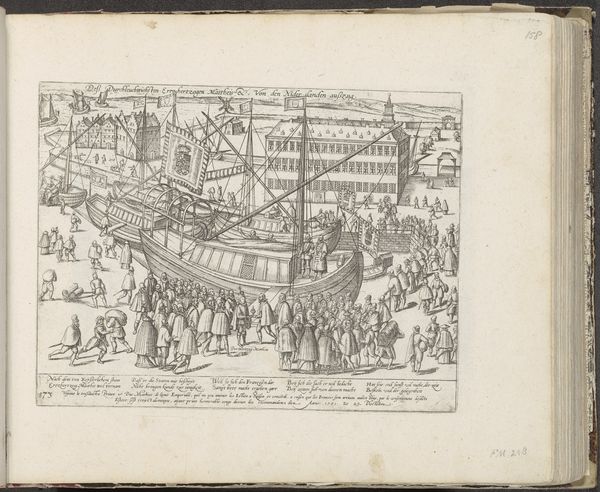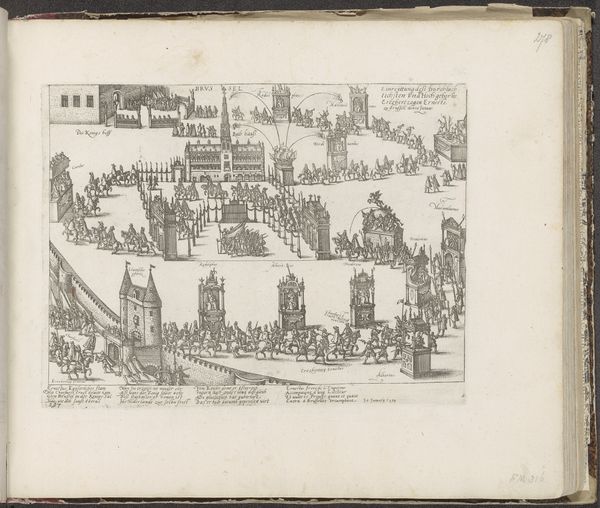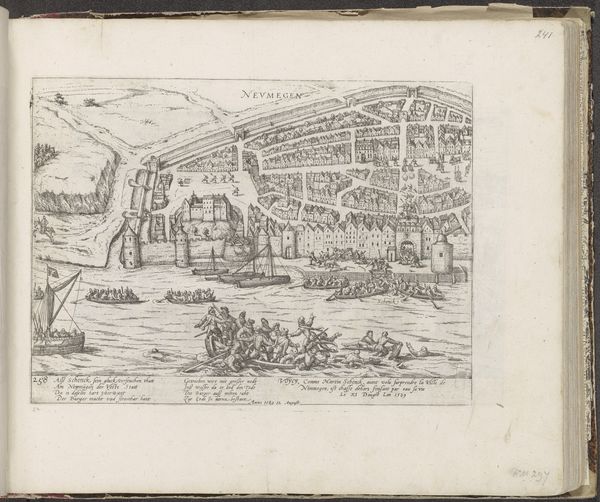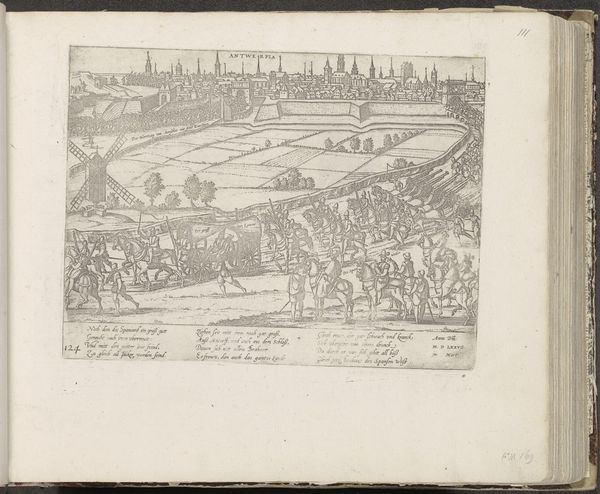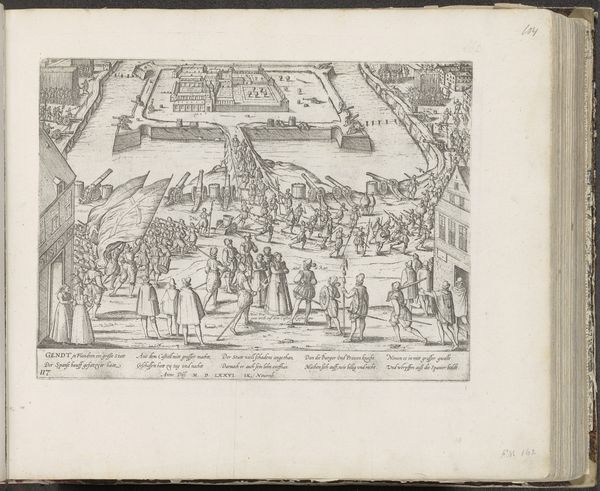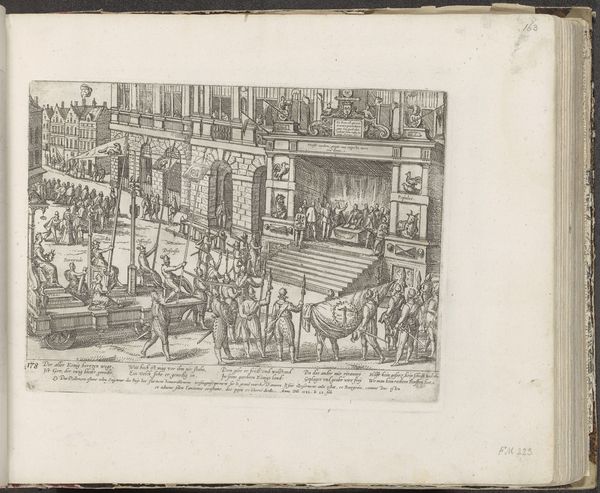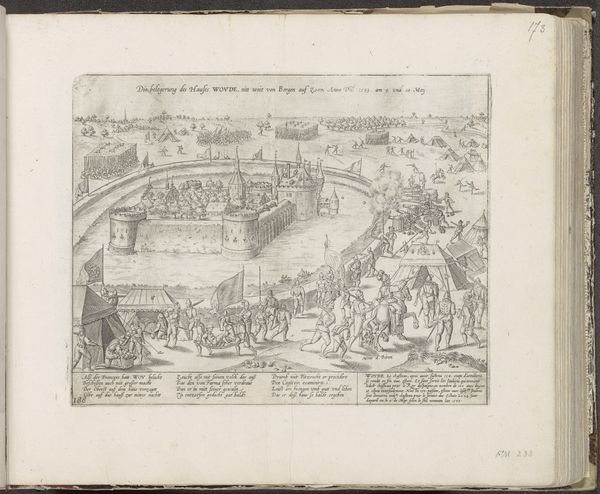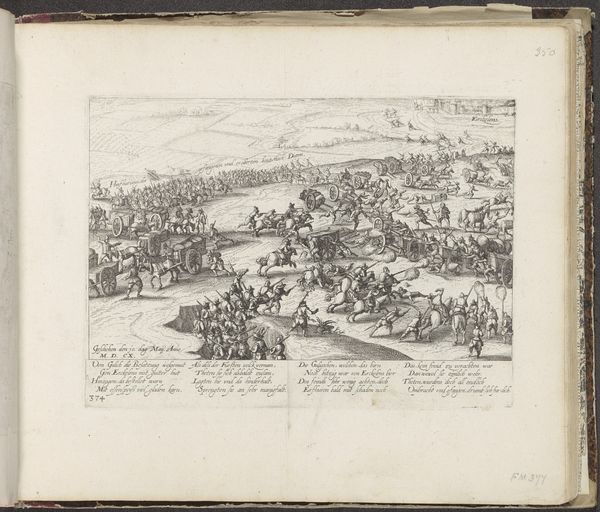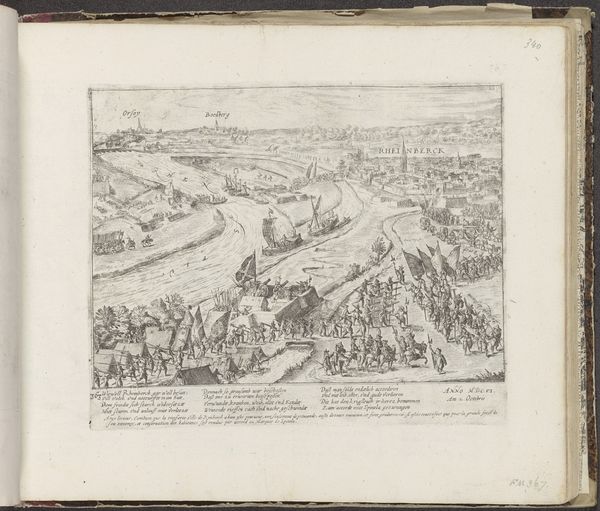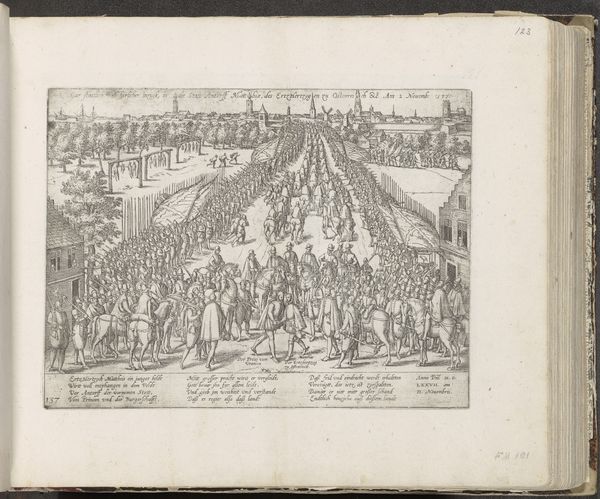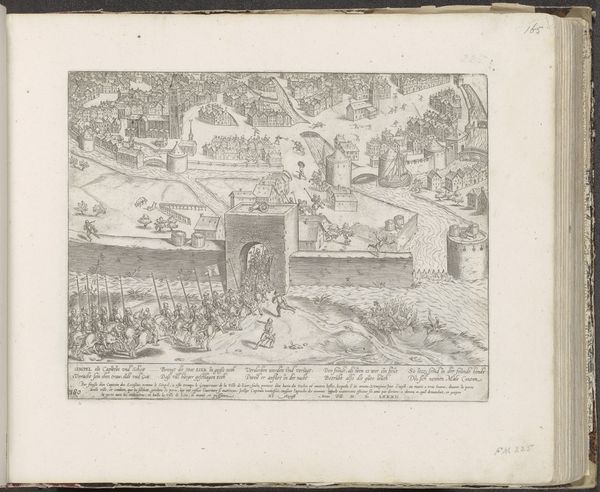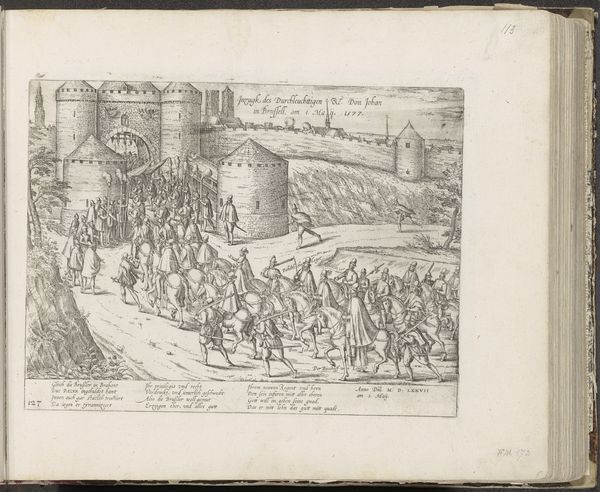
print, engraving
#
toned paper
#
pen drawing
#
dutch-golden-age
# print
#
pen sketch
#
sketch book
#
landscape
#
11_renaissance
#
personal sketchbook
#
ink drawing experimentation
#
pen-ink sketch
#
pen work
#
sketchbook drawing
#
cityscape
#
history-painting
#
sketchbook art
#
engraving
Dimensions: height 206 mm, width 269 mm
Copyright: Rijks Museum: Open Domain
This is Frans Hogenberg’s “Aftocht van Spanjaarden uit Maastricht, 1577,” made with engraving, a printmaking technique dating back to the 15th century. The image shows Spanish troops departing Maastricht, and its creation would have begun with a metal plate, likely copper or steel. The artist would use a tool called a burin to carve lines directly into the plate's surface. This required immense skill and control, as the depth and width of the lines determine the amount of ink the plate holds, and therefore, the darkness of the printed line. The plate would then be inked, the surface wiped clean, and pressed onto paper, transferring the image. The sharp, precise lines of the engraving lend a remarkable clarity to the scene, capturing the details of the soldiers, horses, and the architecture of Maastricht. The repetitive, manual labor contrasts with the chaotic scene of war, highlighting the role of printmaking in disseminating information and shaping public opinion during times of conflict. It’s a powerful reminder that even seemingly objective images are the product of human hands and political contexts.
Comments
No comments
Be the first to comment and join the conversation on the ultimate creative platform.
